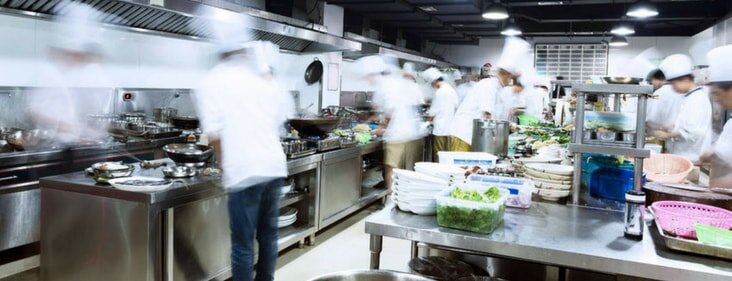Your interest in the delivery-only restaurant model makes smart business sense. Consumer demand for meal delivery is expected to grow 12 percent annually over the next five years. The numbers add up to a virtual restaurant trend that goes beyond traditional carry-out or pizza sales.
Whether you call it a ghost restaurant or a virtual restaurant, this type of operation offers first-time entrepreneurs an affordable entry into the foodservice industry. It can also serve as an expansion of existing brick-and-mortar locations.
Running a Delivery-Only Restaurant: 7 Things You Need to Know
They can order a meal in a box and cook for themselves, or they can enjoy the ultimate dining-in convenience. Build your delivery-only operation by offering customers a great selection of high quality, ready-to-eat options.
These questions cover seven important things you need to know about turning the virtual restaurant model into real business success.
1. What Exactly Is A Virtual Restaurant?
The industry refers to this business model as a virtual restaurant because it doesn’t have a traditional storefront. You operate out of a brick-and-mortar location, but it’s strictly a kitchen with supporting infrastructure.
Everything you deliver is prepped and cooked on-site. However, the principles that apply to running a successful restaurant in a traditional setting also apply to the ghost model.
2. Is The Kitchen Different Too?
Starting a delivery-only restaurant starts with the kitchen. Quality equipment and a well-planned layout are important. Almost all the space in a virtual restaurant belongs to the kitchen, so you usually have expanded working room.
This allows for customization, but you’re still paying for commercial square footage. Many delivery-only operations share rented kitchen space. Depending on size, a commissary-style setup can serve multiple ghost businesses.
3. HOW DOES KITCHEN SHARING WORK?
Kitchen sharing works best when the space is pre-designed and equipped for collective operations. This offshoot of deliver-only foodservice is becoming its own business niche. The money-saving advantages of renting shared kitchen space quickly add up.
• No investment in equipment or infrastructure
• Affordable membership rates per hour or month depending on space and equipment requirements
• Dishwashing, supply and laundry services by the hour or month
• Integrated technology covering everything from inventory tracking to POS systems
3. How Does Kitchen Sharing Work?
A virtual operation gives you menu versatility almost on the fly. Because you aren’t presenting customers with printed menus, you can quickly change items depending on what does and doesn’t work. You can also take advantage of seasonal ingredients without traditional menu redesign.
This ability to customize works for the consumer too. If you specialize in veggie bowls, offer customers options for selecting different ingredients and personalizing their meal. Your kitchen’s ability to quickly prep highly individualized orders can set your virtual menu apart from the competition.
5. How Do I Market My Ghost Restaurant?
Marketing a successful virtual restaurant depends on building a strong online presence. More than 40 percent of home food delivery orders are placed online, so you need a well-designed website and strong social media visibility.
One of your best marketing strategies starts with delivery services. Partner with home-delivery businesses that feature your menu on their apps. This gives you instant exposure to customers who are ready to order.
6. DOES LOCAL SOURCING STILL MATTER?
Locally sourced ingredients serve as a strong marketing strategy. This is especially true with fresh produce. Consumers are always looking for healthier dining choices. Let them know your Caesar salads are prepared with fresh, locally sourced romaine hearts.
Local sourcing gives you greater menu flexibility too. Take advantage of seasonal availability with just a few clicks instead of a menu redesign. By working with local growers, you also build a network for fresh ingredients year-round.
7. What Are Some Other Virtual Restaurant Advantages?
Savings on capital expenditures are the biggest advantage of this business model. You don’t invest in furnishings, decor or dinnerware, and there are additional benefits to consider.
• You enjoy a lowered business risk with a smaller commitment to operating space.
• Reduced costs allow you to serve high-priced items at more attractive price points.
• You can test markets across a wide range of areas from one central location.
• Expansion opportunities include running multiple restaurant brands out of one kitchen.
We Admire Your Hard Work
If you’re working on plans to start up your own virtual foodservice business, we admire your entrepreneurial spirit. If you’re exploring ghost restaurant options from a brick-and-mortar location, we admire your forward thinking.
We all work hard to stay in front the industry’s latest trends and newest technologies. You can always count on Hitchcock Farms to deliver fresh information that helps you make smart business decisions. You can count on us to grow and deliver the freshest possible premium produce too.




